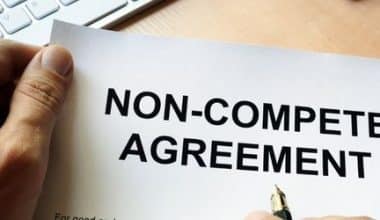The ERC is the cornerstone of the employee retention credit. It’s a way to incentivize employers to keep their workers on board and happy during economic uncertainty. The credit can be claimed by businesses that have been around for at least two years, but it’s not limited to just these types of businesses. This article will walk through what a recovery startup business ERC looks like and how it works, as well as some tips on qualifying for this significant tax benefit.
What is a Recovery Startup Business?
A recovery startup is a small, fast-growing business that has not yet obtained financing. This type of business aims to acquire funding within 6 months and become profitable within 1 year. If you are unsure whether your company meets these criteria, you can use our free assessment tool to evaluate whether your company qualifies as a recovery startup.
What’s the Difference Between a Recovery Startup Business and a Normal Startup?
There are many similarities between regular startups and recovery startups: both require significant amounts of capital for operations; both have high levels of stress during initial growth; both have high failure rates due to lack of experience or resources needed to build out their businesses (e..g., engineers who might work full time but aren’t experts); both need access to technical people who can help with specific tasks related directly back into day-to-day operations…etc…
Does a Business Qualify for an ERC as a Recovery Startup?
A recovery startup business is defined as one that was started after the date of enactment of Public Law 112-240, and that has been in operation for less than three years. The Recovery Act provides tax credits for qualifying businesses on their first $3 million in qualified investments made after December 31, 2010.
The first step to claiming this credit is to qualify as a recovery startup by meeting certain conditions under existing law, including:
- Being established as a new business entity (i.e., not an existing corporation or limited liability company).
- Having fewer than 50 employees at any time during its first three years of existence (this requirement does not apply if you also claim other types of credits under the same legislation).
How Do I Claim Recovery Business Startup Credit?
The ERC is a tax credit that is available for all businesses, even those that are not startups. This credit can be claimed as part of your regular tax return, worth up to $50,000 per year.
The ERC was created in response to the country’s economic downturn, and it helps small businesses reduce their taxes by reducing what they pay at the federal level. It also reduces paperwork while claiming this credit by automatically updating your records yearly (no need for self-reporting).
A recovery startup is not limited to just recovery services related to natural disasters; it can include any entrepreneurial activity requiring investors’ capital investment. It also doesn’t matter when your startup was formed—you could start working on this project now and qualify as a recovery startup even though you haven’t launched yet.
Can I Still Apply for the Employee Retention Credit in 2023?
Yes, you can still apply for the employee retention credit in 2023. The credit is available until 2023 and will be available to businesses not operating during the 2017 tax year. You may be eligible for the credit if you have been in business for less than 12 months.
The employee retention credit is available for businesses with fewer than 25 full-time employees. It can be claimed by any business that hires one or more new employees and keeps them on the payroll through December 31, 2022. The credit equals 20% of the wages paid to each new employee in your business during 2018 and 2019.
Recovery Startup Business ERC
A recovery startup business is a type of recovery that allows you to claim employee retention credit. This differs from the other discharges, where you can only claim a portion of your employee’s wages as income. Recovery startup businesses are also eligible for the new ERC, which helps them grow faster than other types of startups would be able to do if they did not have access to this program or credit.
Eligibility Requirements:
To qualify for this credit, you must meet all three requirements: firstly, your company must be starting up after January 1st, 2021; secondly, its final cost base must have been below $1 million; thirdly (and most importantly), no more than 30% of its paid-up capital was owned by any one person at any time during its existence as an active business enterprise (including both sole proprietorships and corporations).
What Are the Two Types of Recovery?
Recovery from a disaster: This refers to rebuilding a business following an event that has caused it to shut down. For example, if you own a restaurant and your building burns down, then you would be considered in recovery from a disaster because you have lost everything.
Recovery from a recession refers to regaining financial stability after experiencing economic hardship. The economy may be improving, but it may still be too early for your business customers/employees or suppliers (for example) who depend on you financially at this point due to their needs changing significantly more than yours did during that period when things were tough for them as well as for everyone else around them.
Recovery Startup Business Employee Retention Credit
The Recovery Startup Business Employee Retention Credit is a new incentive to help businesses in the recovery startup space. Here’s what you need to know about it:
What is the Employee Retention Credit?
The ERC is a percentage of your employee base that can be earned by employers who choose to participate in this program. It’s designed for companies that have exited from bankruptcy or receivership and have had their operations shut down because of insolvency but want to continue operating as usual (i.e., keep their doors open). This credit could also be referred to as a “refundable” credit, meaning your company will receive more money than initially paid out if it qualifies for one based on its criteria—which we’ll see below.
How Do I Claim My ERC?
Your business must meet all three criteria listed above before you can claim any portion of this incentive: 1) It must have been established after January 1st, 2019; 2) It must report at least $250K in revenue each quarter during CY 2019-2021; 3) Its employees’ average wage should not exceed $35/hr by 2021 (with some exceptions). These requirements may change over time, though, so make sure you check back often.
Is ERC Taxable Income?
The IRS defines taxable income as an amount that’s subject to tax. It’s not the same as gross income or net (before taxes) income, which are different parts of your business’s overall revenue.
You owe the government taxable income to file your annual tax return. This can include things like salary, commissions, bonuses, and other forms of compensation from your company; sales revenue; interest earned on investments; rental property payments; royalties from intellectual property (like books or music); capital gains from investments such as stocks or bonds; and more.
ERTC Recovery Startup Business
A recovery startup business is a company that develops and sells products or services to help recover losses in natural disasters. The definition of a recovery startup business is relatively broad, but it must meet specific requirements to be eligible for an ERC.
The applicant must be one of the following:
- A state or local government agency, agency, or department (state or local) with authority over insurance matters.
- An organization that has been approved through FEMA’s Individual Assistance Program and has exhausted all other funding sources.
- An individual who has applied for assistance through FEMA’s Individual Assistance Program.
Summary
The Employee Recovery Trust Fund is designed to help businesses recover from the Great Recession. This fund was created in 2009, and it’s been used by companies like Dunkin Donuts, Verizon Wireless, and Whole Foods to help them compete with other companies in their industry. The ERC allows companies that qualify for the credit up until 2022.
Recovery Startup Business FAQs
How do I claim recovery from a startup business?
Filling out form 941 when you file federal taxes.
How do I calculate the employee retention credit?
Based on total qualified wages, including health plan expenses paid by the employer to the employee.
How do I check the status of my employee retention refund?
Contact the IRS.
Related Articles
- SERVICE RECOVERY: Ultimate Guide to Service Recovery
- 5 Quick Bad Debt Recovery Strategies
- EMPLOYEE RETENTION RATE: How to Calculate It and Things You Must Know
- The Best Easy Low-Cost Start-Up Business Ideas in 2023 (Updated)
- EMPLOYMENT RETENTION: Definition, Strategies, Tax Credits, and Rates






